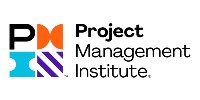Interorganizational Design for Collaborative Governance in Co-Owned Major Projects: An Engaged Scholarship Approach
Large projects co-owned by several organizations with separate, perhaps competing, interests and values are characterized by complexity and are not served well by standard organizing structures. To build trust and a common vision, establish accountability and transparency, empower practitioners, and share skills and resources, a collaborative governance structure is needed.
Based on a major transportation project in North America, the researchers in this study set out to identify the type of interorganizational design most suitable for collaborative governance of a major project by co-owner organizations. Their resultant framework is based on four key mechanisms: sensemaking, structural, procedural, and relational.

Method Summary
The research is supported by a review of existing knowledge about interorganizational design and collaborative governance in public infrastructure projects. The research method for the selected case study itself was an engaged scholarship approach. This is action research in which academics work closely with participants to develop pertinent solutions that also have a wider applicability to similar projects, thus enhancing the body of project management knowledge.
The project had five governmental and municipal stakeholders, each of which had political accountability, were co-owners, and needed to play a role in decision-making. The project was executed by a project operator, responsible for delivery and efficiency, which had a dedicated project management office (PMO). Five directors and senior executives from the project operator and its PMO cooperated with the three authors and an additional co-researcher to develop an effective interorganizational design.
An iterative approach was used (Iterations A, B, and C), involving three rounds of meetings (eight in total) with the five practitioners, followed by interim reports and feedback before the final framework was established. Face-to-face discussion was supplemented by telephone calls and scrutiny of internal and external documentation. This approach meant that the proposed structure could evolve and be refined during the research period.
Key Findings
- A suitable governance structure involved four different types of mechanisms:
sensemaking, structural, procedural, and relational. Sensemaking mechanisms enable the co-owned governance collaboration that then is deployed by structural and procedural mechanisms and finally maintained and strengthened by the relational ones. - Sensemaking mechanisms were mandatory to:
o Establish a common vision,
o Enable flexibility within that vision,
o Establish a clear ownership structure, and
o Ensure a shared culture with common values. - Structural mechanisms were required to:
o Specify roles and responsibilities,
o Establish decision-making committees,
o Define levels of authority,
o Apportion accountability,
o Set up contracts and approvals, and
o Allocate risks. - Procedural/process mechanisms were essential to:
o Define approval procedures,
o Establish modes of communication,
o Allocate tasks and responsibilities,
o Undertake monitoring and quality assurance,
o Manage change,
o Resolve conflicts. - Relational mechanisms were necessary to:
o Ensure effective leadership,
o Define performance-related rewards,
o Achieve collaboration based on trust, and
o Develop shared expertise.
Practical Implications
An appendix provides a detailed list of best practices. Some key points are summarized in this table.
| Sensemaking Practices | Structural Practices |
|---|---|
| Define shared goals and values. Define expected, measurable, results. Establish an ownership structure with a strong leader. Develop a culture of flexibility to allow innovation. Define indicators of collaborative success. Revisit contract clauses and defer decisions if necessary. | Clearly define roles and responsibilities. Establish a governance board. Delegate practical decisions to the project management team. Communicate risks clearly and define a risk-sharing mechanism. |
| Procedural Practices | Relational Practices |
|---|---|
| Set up clear procedures for decisions and approvals. Meet regularly and share information. Establish tendering processes and sequential bidding. Set up a steering committee and an innovation committee. Set up independent monitoring (with key performance indicators [KPIs]), quality assurance, and auditing. | Ensure strong leadership. Build flexible partnerships and strong personal relationships. Prioritize reputation and long-term outcomes over short-term gain. Establish a benefit-sharing mechanism. Engage and collaborate with all stakeholders. Share lessons learned and innovative practices. |
Overall Takeaway
- A suitable structure for a complex interorganizational collaborative project with multiple co-owners requires four mechanisms: sensemaking, structural, procedural, and relational.
- It would be beneficial to prioritize the sensemaking mechanisms at the start of a project, to ensure a common understanding about its scope and governance.
- The four mechanisms ensure that all participants are clear about the balance between (and apportionment of) authority and action, decision-making and responsibility; that there is a shared culture and vision; and that all parties communicate and work effectively together in a relationship of mutual trust.
- It works for the project delivery organization to take a leadership role (within a general context of collaborative governance).
Further Information
For further information on this and similar projects, please contact:
Maude Brunet, maude.brunet@hec.ca
Marie-Claude Petit, petit.marie-claude@uqam.ca
Alejandro Romero-Torres, romero-torres.alejandro@uqam.ca
For the full article go to https://doi.org/10.1177/87569728231208853































































































